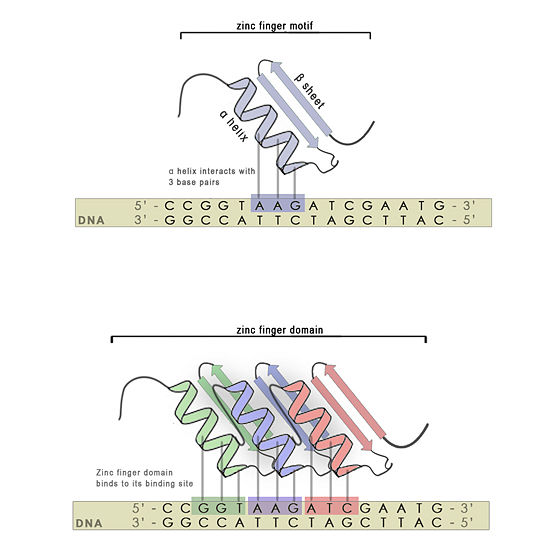Genetic 564 Undergraduate Capstone course at University of Wisconsin Madison
What is a Protein Domain?
A protein domain is a conserved region of a protein that are independently stable that is a biological functional. A tertiary protein structure and have both a domain (functional), and a motif (structural) components. A protein motif is a conserved structural protein arrangement that may or may not have a biological purpose. For example, DNA Zinc Finger contains both a conserved function and structure with a biological purpose. It is composed of both a protein domain and motif.
DNA Zinc Finger
Protein Domains of PAX8
The PAX8 protein consists of one domain referred as the paired box (PAX) domain.
Domain Homology of PAX8
The protein sequence of PAX8 consist of the paired box domain (Pink) and low complexity regions (Green). Among mammals the protein sequence contain similar characteristics, compared to the zebrafish and drosophila (invertebrates).
PAX8 Domain Summary
The full name of PAX8 being Paired Box 8 lends itself to a class of domains. PAX8 contains only one class of domain being PAX across all species. Using PFAM and InterPro enables visual comparison of various PAX8 homologs among species illustrating similarities and differences. Domain analysis is another tool when determine possible model organisms candidates for research purposes. In regards to PAX8 conservation of domains are more similar in structure among mammals compared to zebrafish and drosophila.
References:
[1]Breinbauer, Rolf, Ingrid R. Vetter, and Herbert Waldmann. "From protein domains to drug candidates—natural products as guiding principles in the design and synthesis of compound libraries." Angewandte Chemie International Edition 41.16 (2002): 2878-2890.
Cover image: http://images.fineartamerica.com/images-medium-large/1-green-fluorescent-protein-computer-model-dr-tim-evans.jpg
[1]Breinbauer, Rolf, Ingrid R. Vetter, and Herbert Waldmann. "From protein domains to drug candidates—natural products as guiding principles in the design and synthesis of compound libraries." Angewandte Chemie International Edition 41.16 (2002): 2878-2890.
Cover image: http://images.fineartamerica.com/images-medium-large/1-green-fluorescent-protein-computer-model-dr-tim-evans.jpg













